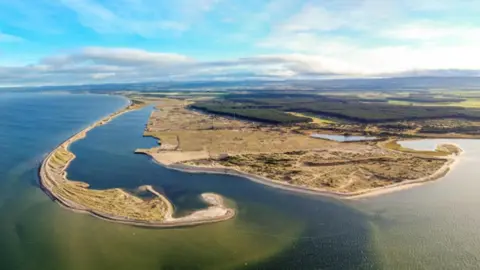Ardersier Port owners join green freeport group
 Haventus
HaventusThe owner of a Moray Firth port has joined the Inverness and Cromarty Firth Green Freeport consortium.
Haventus is redeveloping the 450-acre (182ha) Ardersier Port, near Inverness, as a facility to serve offshore wind farms and other energy projects.
The company has partnered with a number of organisations, including Highland Council, to push forward plans for the new economic zone.
Ardersier is a former North sea oil and gas fabrication yard.
The yard shut in 2001 and, before redevelopment work started, had been the UK's largest a brownfield port.
Brownfield sites are areas of land that had been developed before falling into disuse.
Haventus has secured initial backing of £300m from a US investment firm to bring the port back into use.
Chief executive Lewis Gillies said the proposed new freeport would stimulate local economic growth.
The other consortium partners are Port of Cromarty Firth, Port of Inverness, engineering firm Global Energy Group, University of the Highlands and Islands, Highlands and Islands Airports Ltd and Inverness Chamber of Commerce.
In January it was announced Cromarty Firth and the Forth had been selected to host Scotland's first green freeports.

What are green freeports?
 Opportunity Cromarty Firth
Opportunity Cromarty FirthAlso called free trade zones, freeports are designated areas where the normal tax and tariff rules of the country in which they are based do not apply.
They allow goods to be imported, manufactured and re-exported without being subject to checks, paperwork, or import taxes, known as tariffs.
This means raw materials can be imported, then engineered into whole products for export.
Typically, companies operating in a zone receive tax waivers or tax breaks on National Insurance contributions, Land and Buildings Transactions Tax, business rates and capital allowances.
The Scottish "green freeport" model includes commitments to meeting net zero targets and supporting fair work practices.
